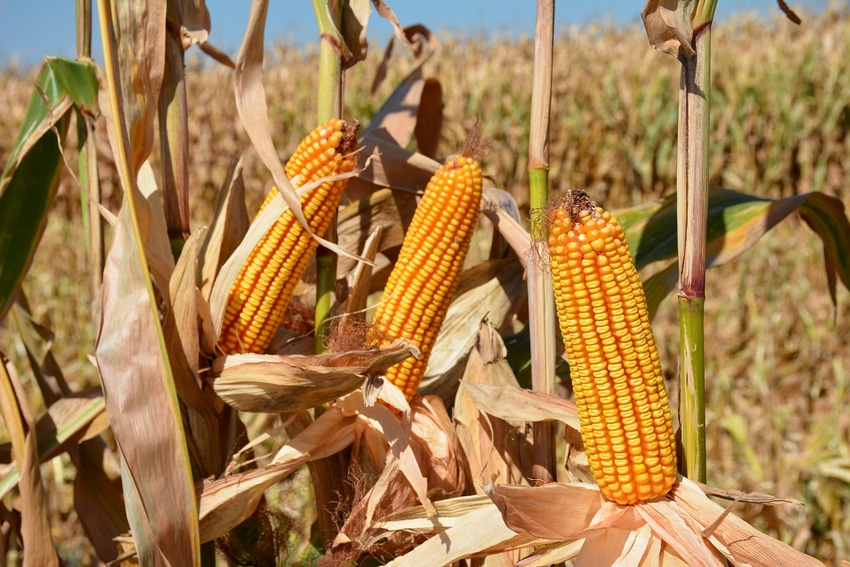
Various stages of crop progress are being reported across the Southwest region. In Central and Southwest Texas, corn is beginning to dry down; sorghum and cotton can be found at varying developmental stages; and in the case of watermelons, harvest is either underway or is wrapping up. In North and East Texas, where more showers benefited the spring growing season, vegetables are doing well and a few farmers report they are working on their second hay cutting. Corn and other crops are reaching maturity.
July 14, 2017

Midway through July and agriculture production holds steady across most of the Southwest with corn and grain sorghum harvest wrapping up and cotton gins opening in the Lower Rio Grande Valley of Texas. In spite of hot weather and only a few showers in recent weeks, early production numbers look good across most of the southern reaches of the region.
The Texas Coastal Bend is not far behind as sorghum harvest continues, and cotton ranges from flowering stage to open bolls. Both sorghum and cotton suffered dry conditions through most of late May and June, but timely, if not spotty, showers benefited some farmers.
Various stages of crop progress are being reported across the Southwest region. In Central and Southwest Texas, corn is beginning to dry down; sorghum and cotton can be found at varying developmental stages; and in the case of watermelons, harvest is either underway or is wrapping up. In North and East Texas, where more showers benefited the spring growing season, vegetables are doing well and a few farmers report they are working on their second hay cutting. Corn and other crops are reaching maturity.
WEATHER DAMAGE
In Oklahoma and most of the Texas Panhandle, beneficial rains benefited some folks, but a great deal of weather damage from storms across the High Plains caused serious crop damage. Some fields of cotton were lost and will not be replanted. Cattle conditions were reported as good across the wider region.
In New Mexico, livestock conditions were also reported good with adequate water and pasture conditions. Green chile harvest is on schedule with the first fruits set to come out of the fields by mid-August. Alfalfa in Southeastern New Mexico is in good condition, and farmers hope early spring rains and recent warm weather will provide multiple cuttings. New Mexico alfalfa has been rated among the highest in nutritional value and is greatly in demand each year, especially by dairy operators.
In terms of pest pressure across the region, most of the problems reported so far this season seem to center on southern areas of Texas. Dr. David Kerns, Texas A&M AgriLife Extension Service integrated pest management state coordinator in College Station, says one of the biggest surprises of the year so far has been the rising number of bollworm issues.
BOLLWORM ACTIVITY
"There has been a great deal of bollworm activity in Bt cotton and farmers have made quite a few insecticide applications," he reported this week. "A lot of these reports have been coming out of the Wharton and Corpus Christi areas, but the problem is not confined to just those locations or to only cotton."
In the Brazos River Bottom, he noted, a field of WideStrike cotton virtually had a worm in every terminal and as much as 40 percent fruit loss in the upper third of the canopy. He noted reports of unacceptable injury in some TwinLink and Bollgard 2 varieties as well.
Kerns said bollworms have also been reported in grain sorghum this year.
"Bollworms are also hitting grain sorghum and if you catch them small — in the first and second instar stage — pyrethroids usually will control them, but rely on Blackhawk, Prevathon or Besiege if many large worms are encountered."
He advises careful choices in cotton as well. He warns that while pyrethroids, the less expensive chemical, can be effective, some reports of control failures have been noted, especially if the bollworms were in second instar or larger stage when sprayed.
He says at 6 percent injured fruit with live larvae present, producers should consider treatment. He recommends use for each product at the following rates: Blackhawk at 3.2 ounces per acre, Prevathon at 14 to 19 fluid ounces per acre, and Besiege at 7 to 10 fluid ounces per acre.
While problems associated with sugarcane aphids in grain sorghum seem to have been minimal so far, crop specialists warn that a second peak period for infestation might cause problems with late planted sorghum, especially in the plains and northern areas of Texas and New Mexico.
Tree nuts in Texas, New Mexico and Oklahoma are reported to be in good health. In Texas especially, producers say the pecan crop shows promise for a good season. Peach season is underway in Texas, but production in the Texas Hill Country is off because of a lack of chill temperatures throughout the abnormally warm winter season.
You May Also Like



